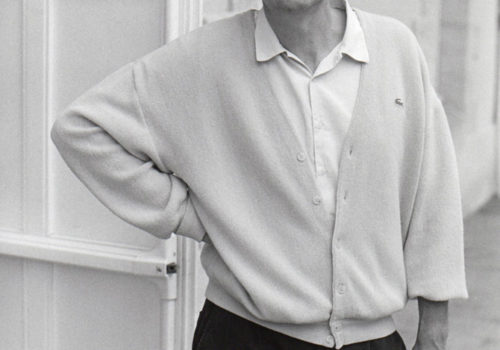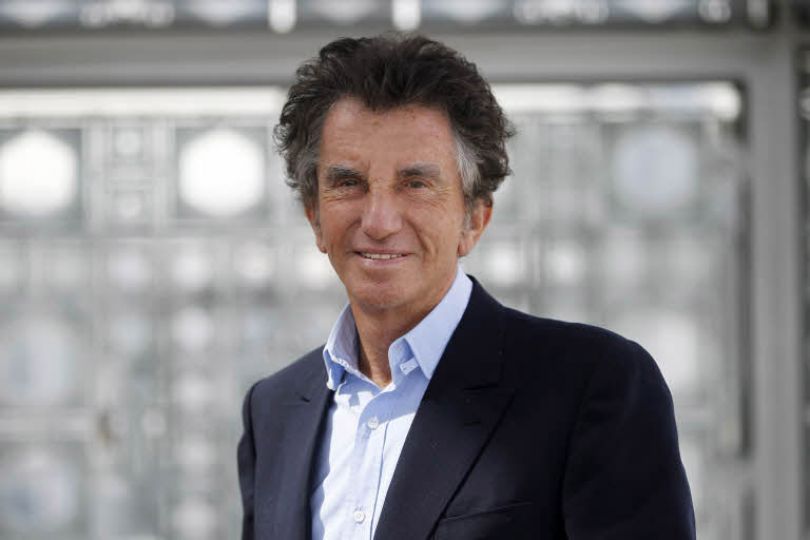Until January 17, the Institut du Monde Arabe in Paris is hosting the first Biennale of Contemporary Arab World Photography which unfolds on both banks of the Seine. We met Gabriel Bauret, the chief curator of the Biennale.
To quote Jack Lang, how does photography make it possible to “overcome stereotypes and entrenched positions” in the context of the contemporary Arab world?
Indeed, there are what you call entrenched positions in daily news, but I think this is more of a question of Francocentric politics, whereas what I really care about is to show that the Arab world is not a monolithic bloc, but that it possesses a diversity of cultures, religions, traditions, landscapes, etc. I believe this is the most important point. Because the news, with excessive media coverage, generates clichés, stereotypes—clichés also in the French sense of photography. When we speak about the Arab world, people immediately have a very rigid response. So we wondered how photography participates in overcoming stereotypes. What does photography really show, whether we’re dealing with the work of so-called Arab photographers or Western photographers, whom we’ve invited to interact with each other.
What are the main themes that emerge from these insider and outsider perspectives?
Every artist is shaped by their past, their history, their culture. Embarking on a project such as this one from a French vantage point is therefore very different from last year’s Houston FotoFest devoted to the Arab world. We have our own history, including the history of art, since the relationship between French artists and the Arab world is what was referred to at one point as orientalism. So we have this past which precedes us and necessarily impacts on the artists; this is why it is interesting to confront insiders and outsiders. In contrast to someone on the inside, intimately bound up with the issues, say, women artists working on the status of women, like Mouna Saboni (La peur [Fear], Egypt), someone coming from the outside, even if they are passionate about the issues, they won’t have the same exposure, there will always be a divide between the two. This informs a certain approach we wanted to maintain, that is, to avoid divisions, and instead encourage dialog and constructive confrontation.
How do you valorize the more neutral and nuanced positions vis-à-vis a reality that often generates anxiety?
This anxious reality isn’t confined to photography. It’s a general mood that may or may not be highlighted by the photographers. I wrote a text for the catalog where I speak of “intranquility”: a sort of disquiet palpable in all these photographs. Sometimes there is a sense of threat, disappointment, injustice. We inhabit a very fragile world.
In the wake of the Arab Springs, is there, as G. Didi-Huberman put it, a sort of “missing image” in this panorama, something indescribable, ineffable?
Between images, as between words, there is always an interstice, there is always something left out. A photograph never tells the whole story, and a great artist will make us wonder what is outside the frame. The missed opportunities of those Springs are glaring in their absence: there is no image of victory, no country satisfied with its fate. Instead, we have poetry and metaphysics. Take, for example, Medhi Medacci’s work right in front of us (Paysages couleur [Colored Landscapes], Syria): this cube could be seen as a purely artistic exploration, but it is very loaded symbolically. The artist does not have to spell it out; he produces an image, and it’s up to the audience to sense the particular significance of the work.
Isn’t there a risk of pigeonholing or stigmatization when you include only photographers or artists operating in this particular region, who may otherwise see themselves as being international and who are very mobile?
I don’t feel we have gone in this direction at all, since as soon as we invite photographers to come and express themselves, we treat them the same as we would any other photographer; no one is being pigeonholed.
There are some who have declined, and did not wish to be presented in this context, and we respect their decision. I can understand that sometimes labels can distort and misinform. In any case, while working on this project I quickly realized that “Arab” didn’t mean much as an abstract category. Similarly, I’m not going to claim to have defined what it means to be an Arab photographer.
Will there be further editions of the biennale and what form will they take?
We are brainstorming some ideas, but nothing specific at this point. We want to see how the public is going to react, if the reception is enthusiastic on the part of critics, who, by the way, are welcome to help us improve our selection in the future.
EVENT
Biennale of Contemporary Arab World Photography
From November 11th 2015 to January 17th, 2016
Paris, France
http://biennalephotomondearabe.com
Picto Lab is partner of event www.picto.fr

















